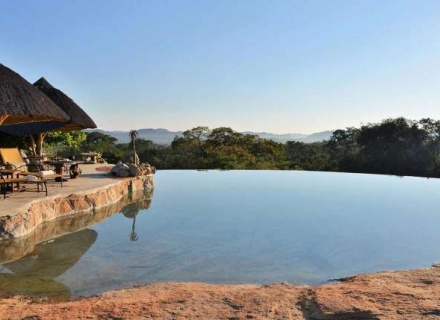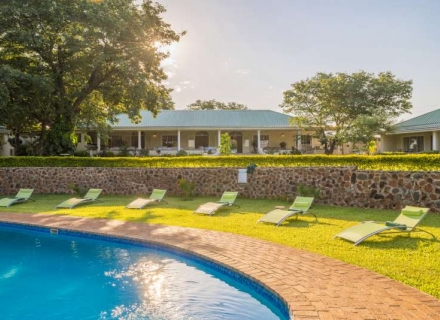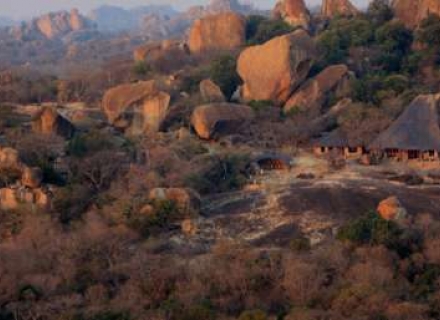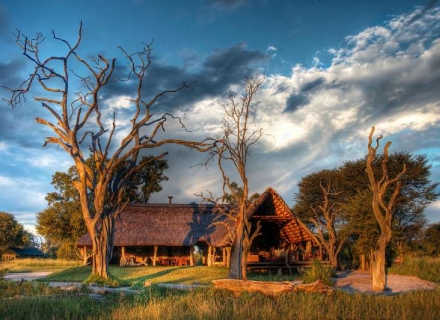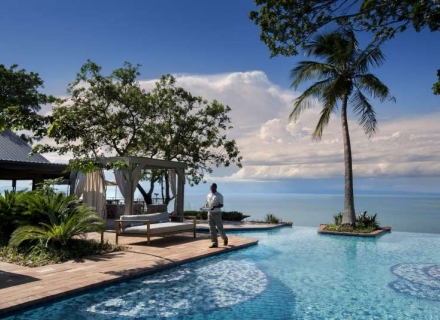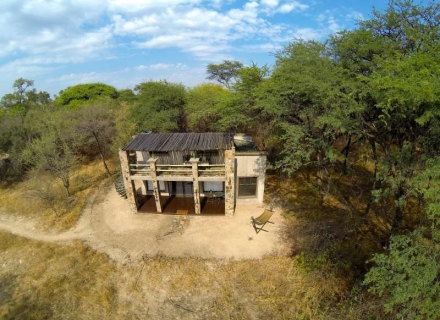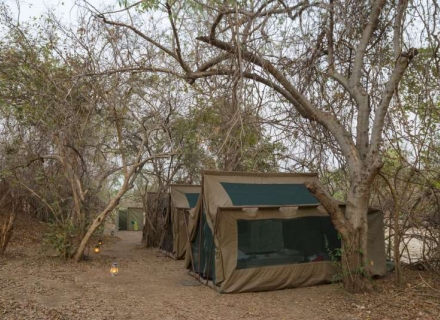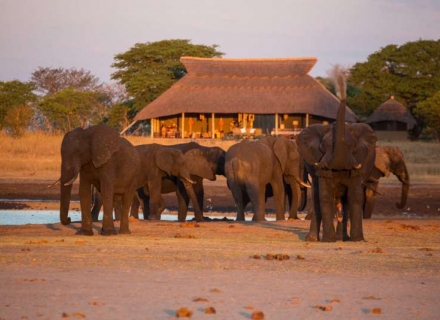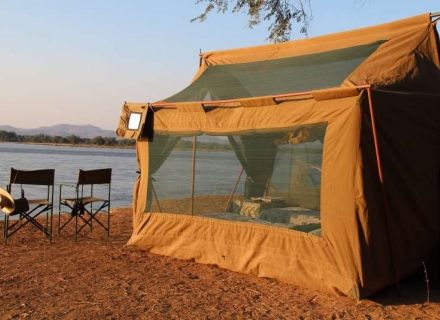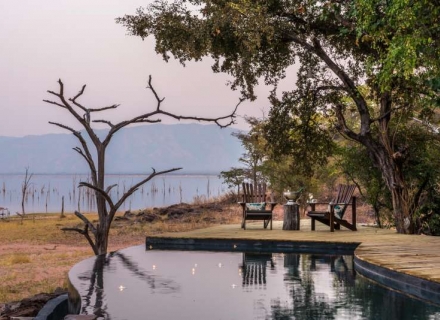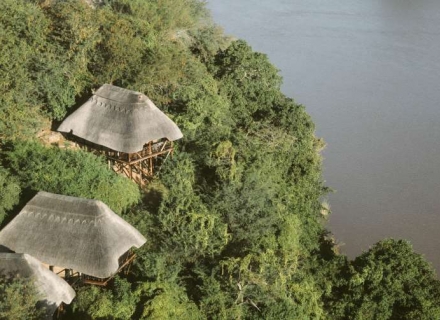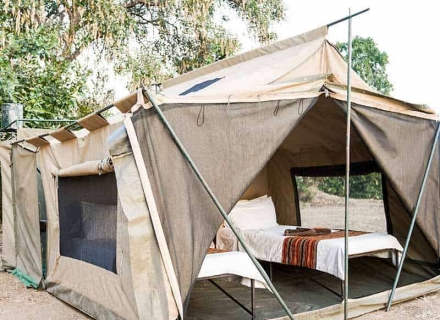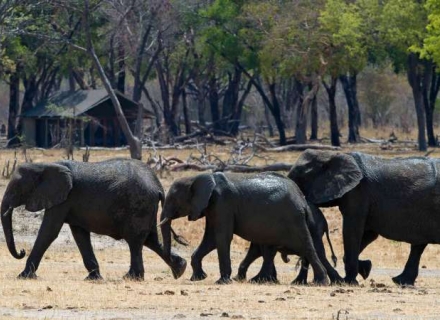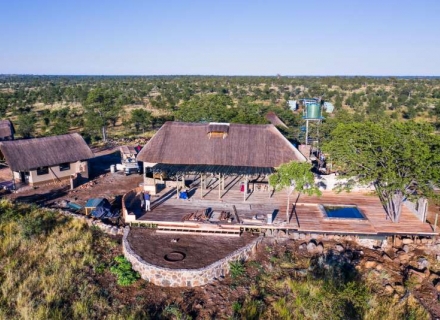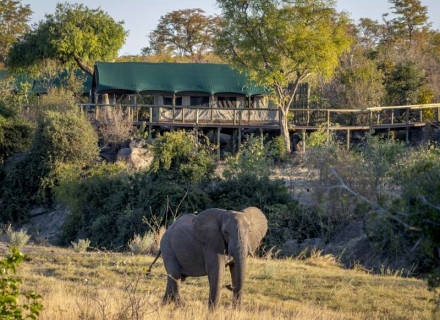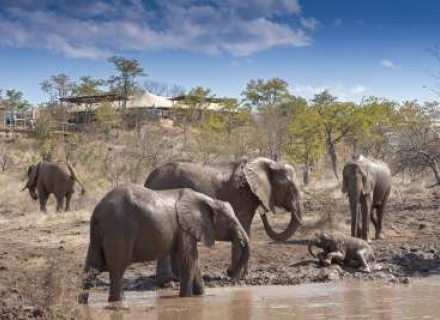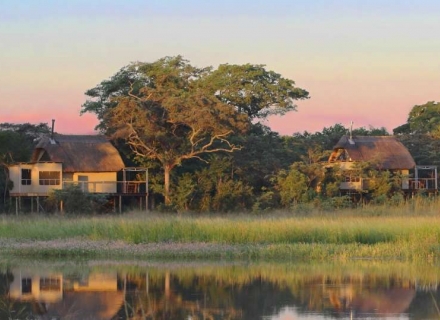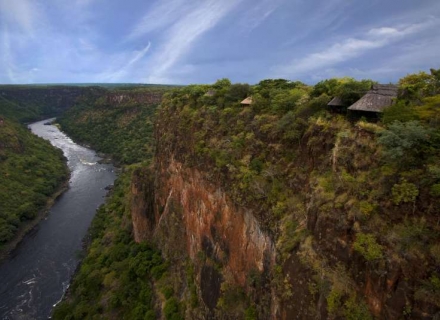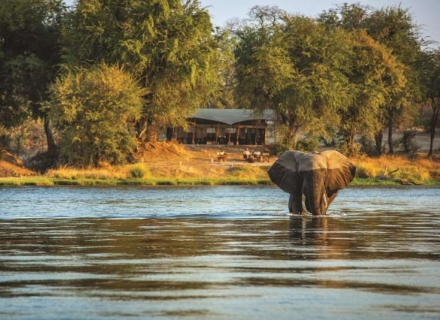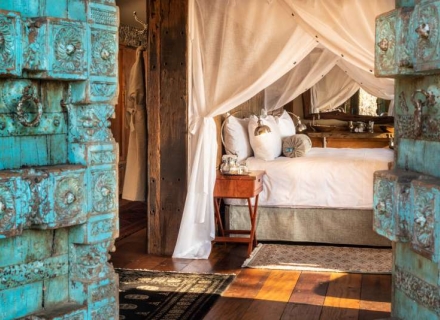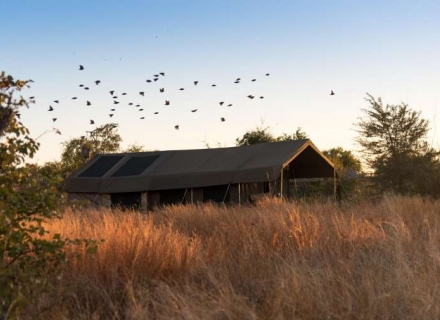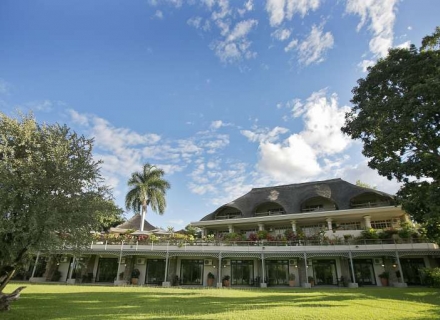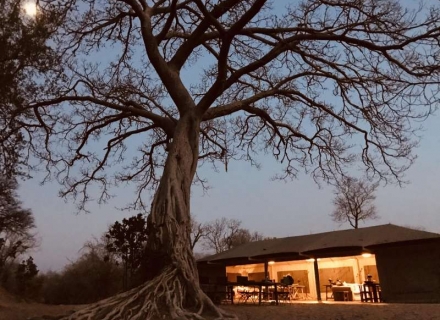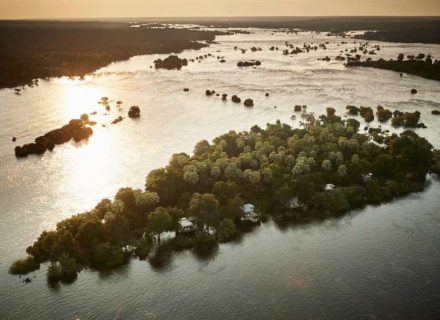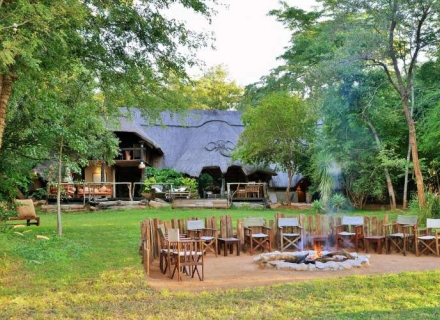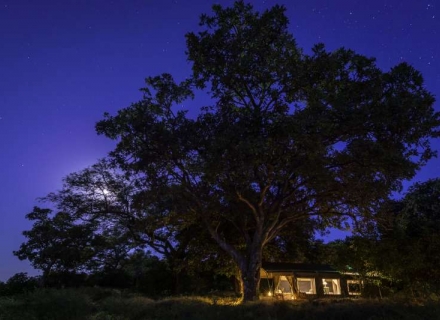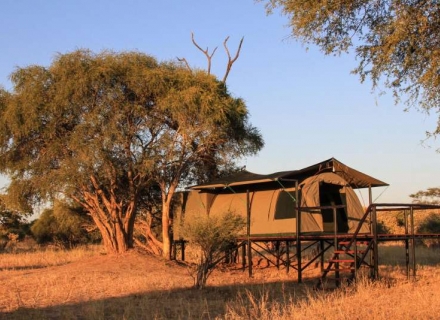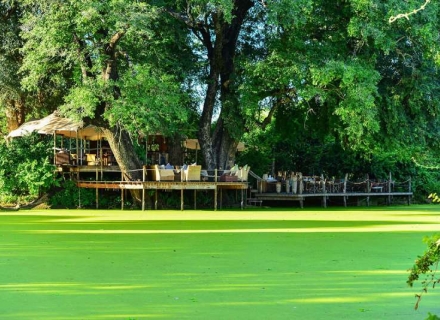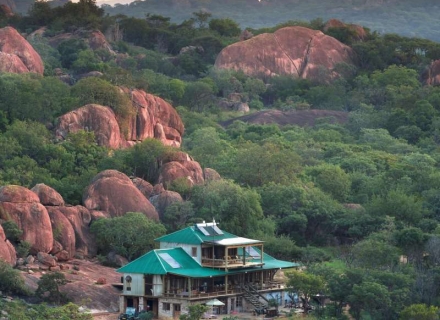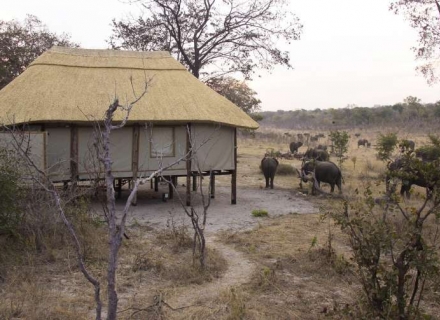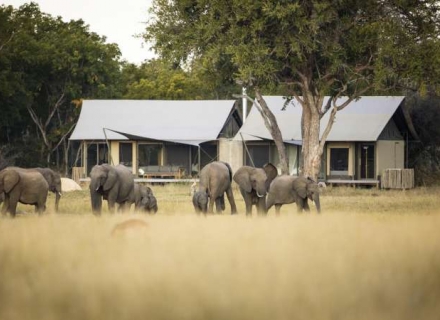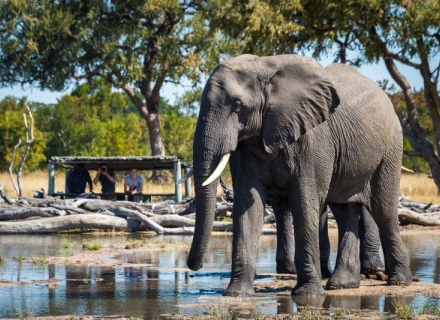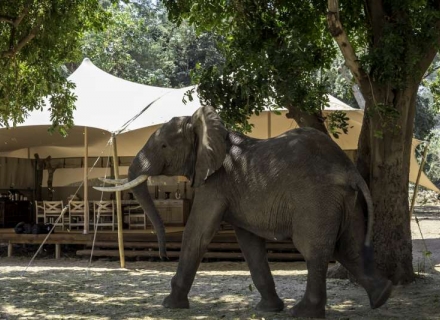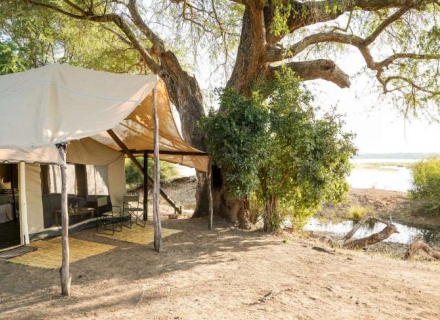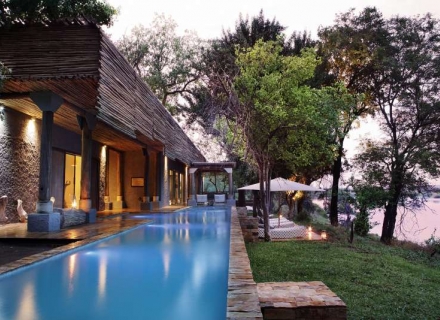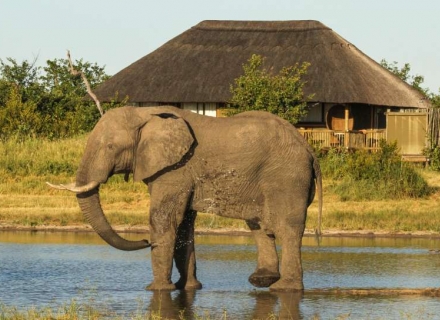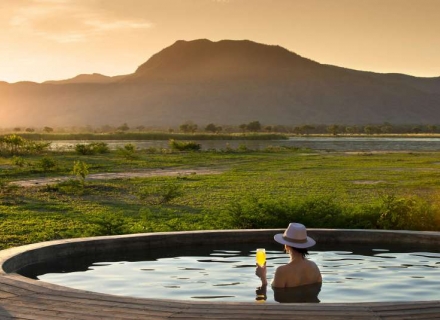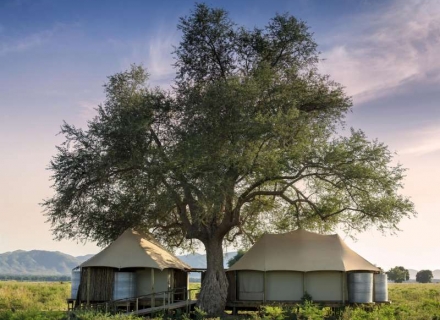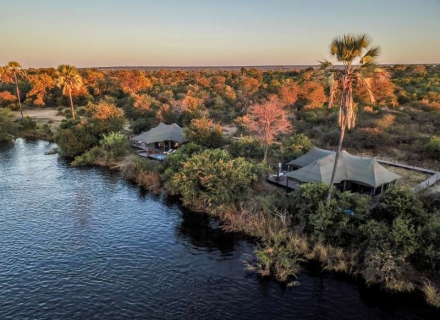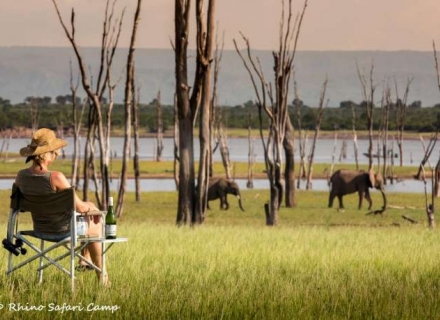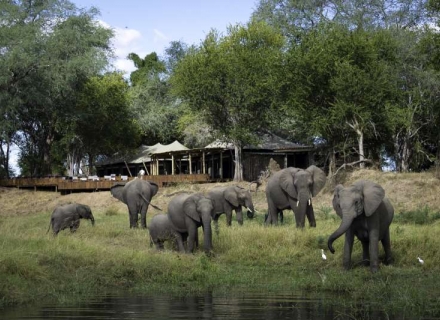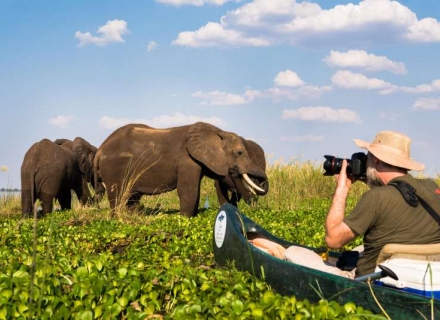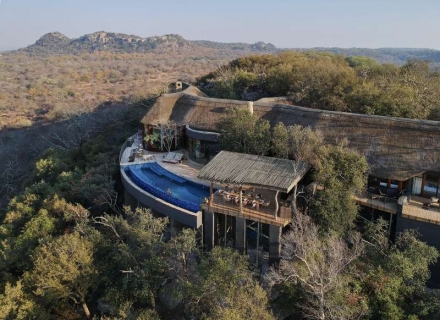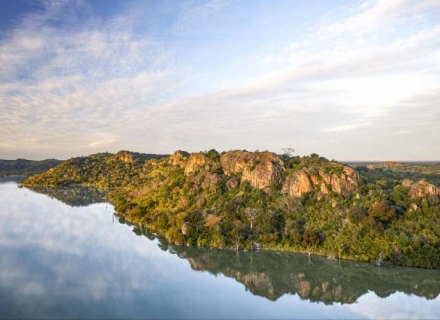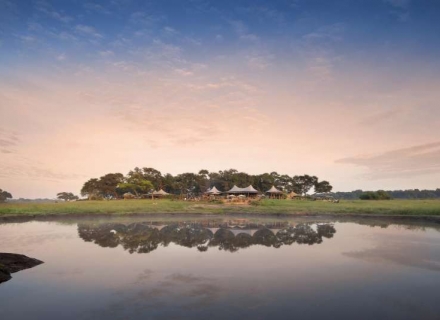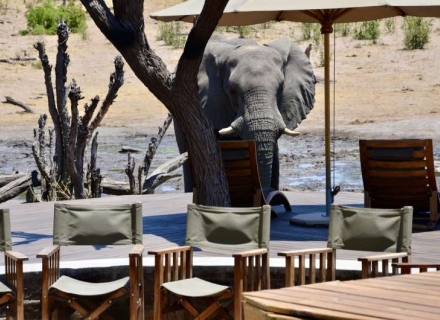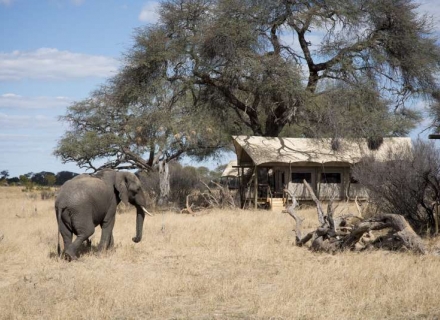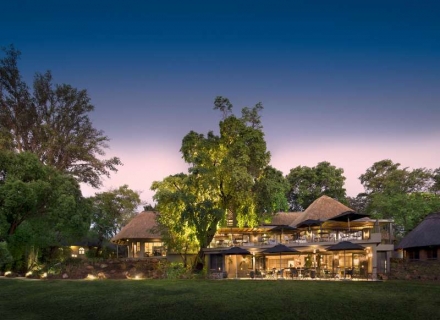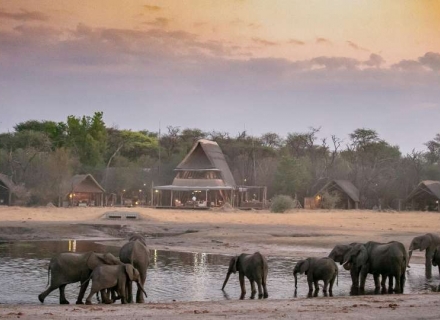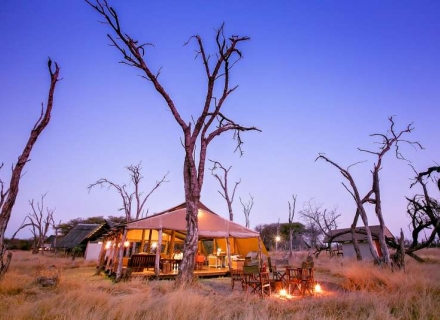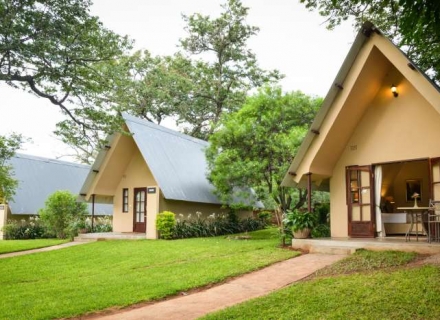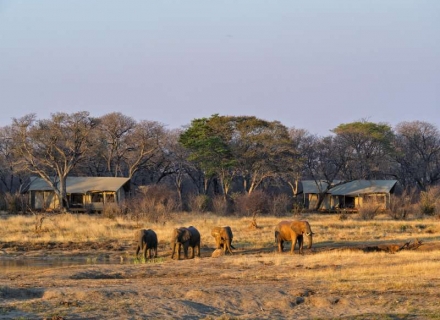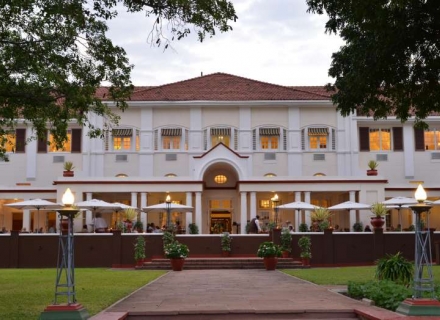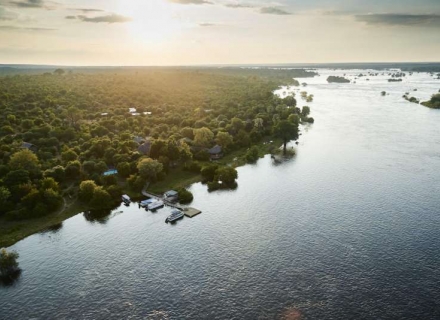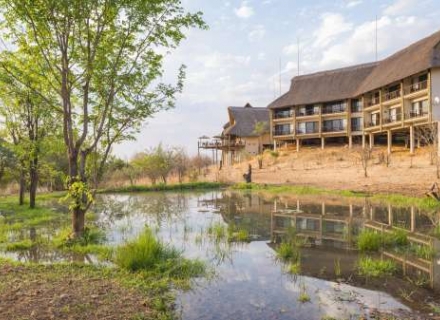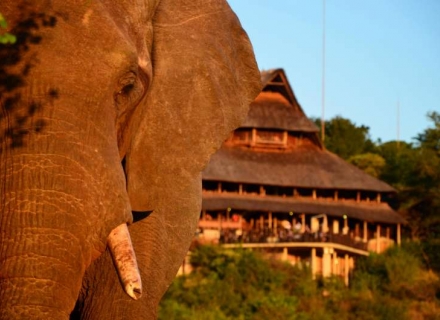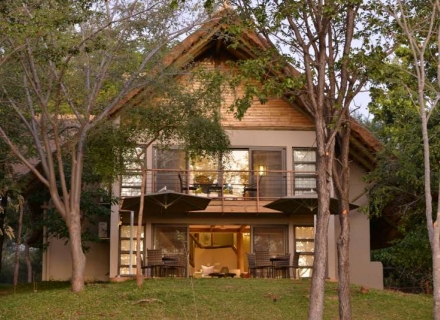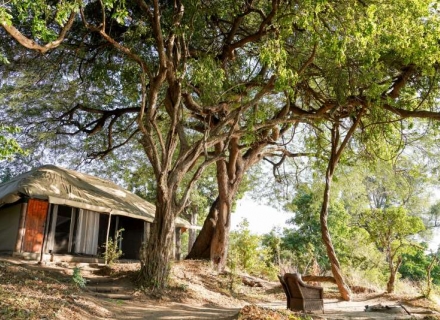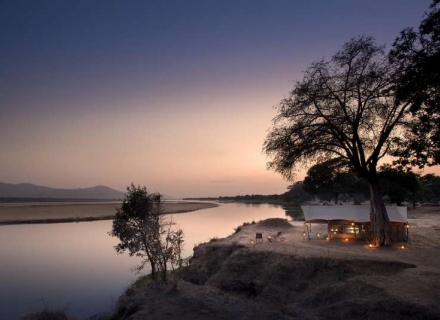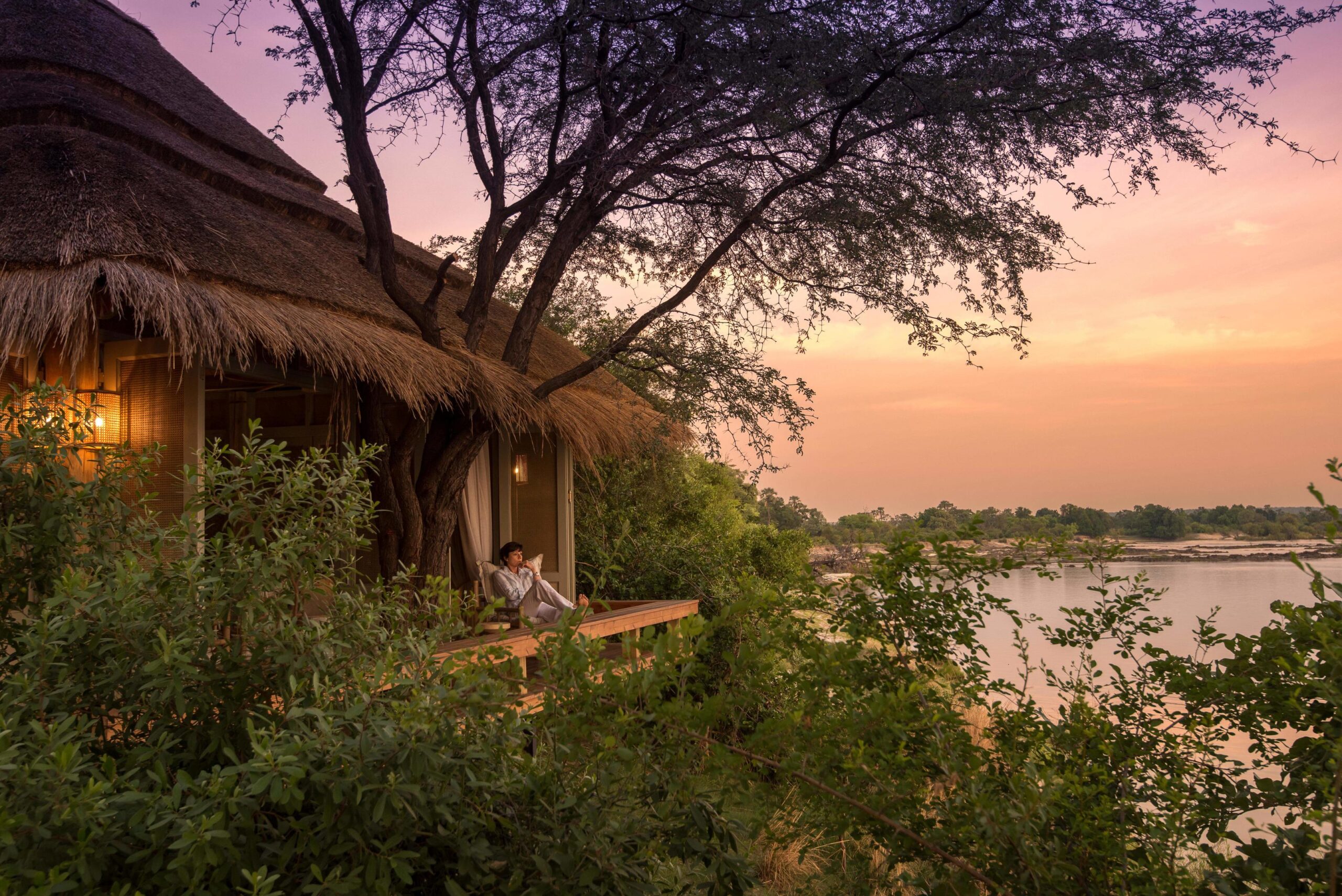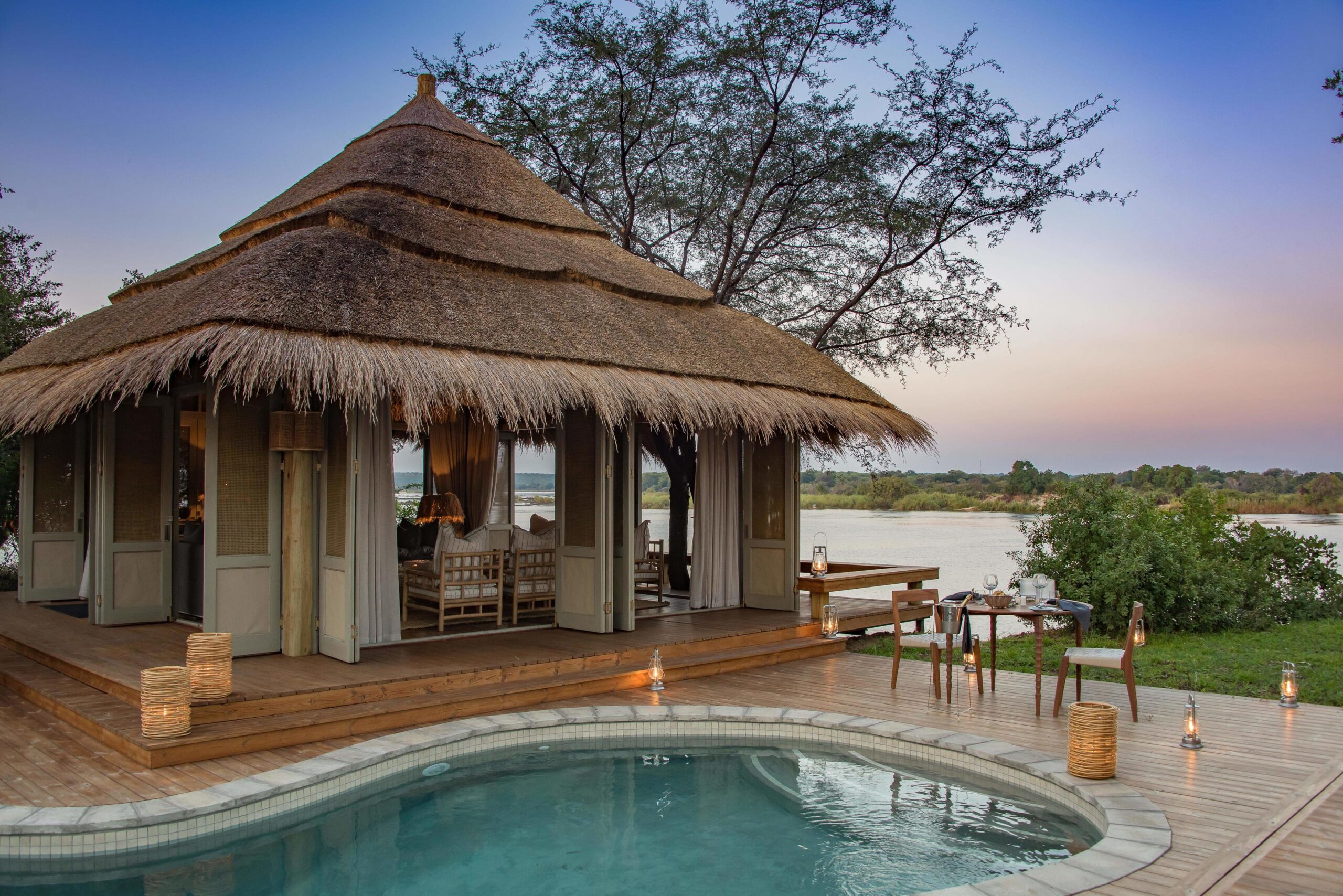CAMELTHORN LODGE – HWANGE NATIONAL PARK
Camelthorn Lodge is nestled in a patch of pristine woodland just west of Ngamo on the edge of the south eastern corner of Hwange National Park and is just outside the park in a private concession around 10 minutes’ drive to the park gate. The main lodge is unique in design and has a huge ancient Camelthorn tree that spans a 35-metre outdoor dining area as its centrepiece.
The Lodge is strategically placed to explore the remote and unspoilt south eastern area of Hwange National Park and offers a spectacular wilderness experience. Less than a kilometre away from the lodge you can enjoy the underground blind in front of a beautifully located waterhole. Camouflaged as a termite mound and buried under an ancient Mitswiri tree – the photographic opportunities are dramatic. Elephants can be photographed from toe level silhouetted against the sky at a distance of 25 feet.
Enjoy al fresco dining under the ancient camelthorn tree, savour your morning coffee in front of a roaring fire, track herds of elephant by foot and enjoy close up photography from inside the fabulous look-up hide.
LOCATION
Camelthorn Lodge is located in a private concession just outside the south eastern corner of Hwange National Park in Zimbabwe. Access is via a 1 hour light aircraft flight or 4 hour road transfer from Victoria Falls and Bulawayo. You can also take a 2 hour road transfer from Victoria Falls to Dete and then a 2.5 hour rail car transfer from Dete Station.
CAMP
The lodge has just 8 ensuite villas with a bath and feature window overlooking the woodland, large shower, closed off toilet, fireplace, a private ground level deck, upstairs outdoor maisonette with hammock and day bed and electricity by diesel/solar generator.
Main lodge is a magnificent stone structure with thatch roof built in an open U around an ancient Camelthorn Tree.
The woodlands surrounding the forest villas are dotted with small water baths that attract some of the smaller and less destructive woodland creatures – bushbuck, mongoose, squirrels and an abundance of interesting and colourful birdlife.
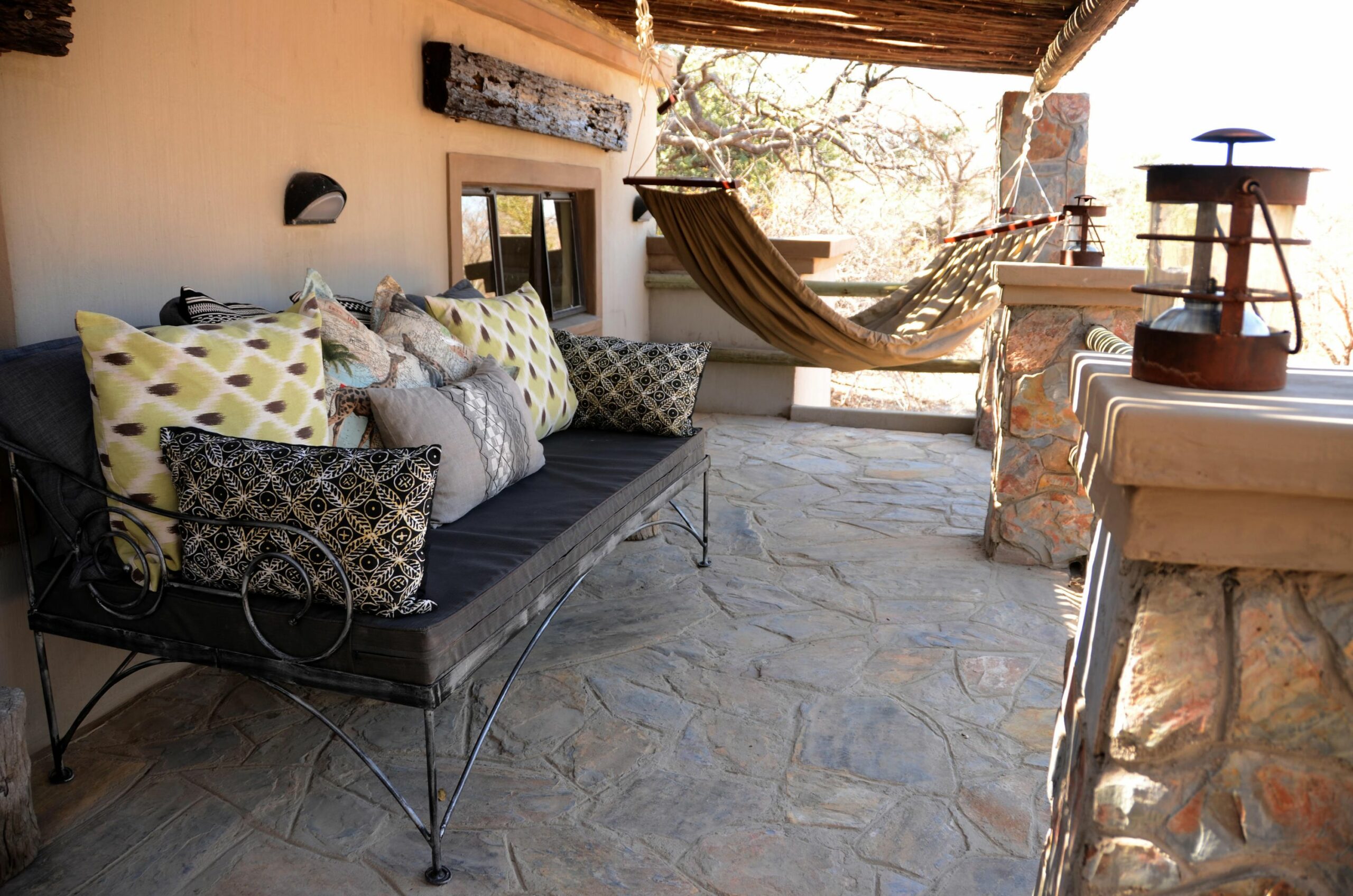
ACTIVITIES AND WILDLIFE
Hwange National Park is the largest National Park in Zimbabwe and was granted Game Reserve status in 1928 and proclaimed a National Park in 1961.
Hwange has an incredible diversity of wildlife and boasts more varieties of mammal and bird species than any other Zimbabwean National Park. There are over 100 species of mammals, including 19 large herbivores such as buffalo, eland, sable and wildebeest and over 400 bird species. The area is particularly famous for its population of elephant – some 44,000 strong based on the latest aerial survey – and combined with the elephants of northern Botswana this is the world’s largest contiguous elephant population.
The southern two thirds of the park are ecologically defined by deep Kalahari sands which support impressive forests of Zambezi teak and other hardwoods. Scattered within these woodlands are ancient fossil lakebeds and drainage lines which are now large savannah grasslands fringed with acacia and leadwood trees.
Bomani and Camelthorn are located close to Ngamo – this mix of open grasslands and woodlands provides the perfect mosaic of habitats for the full spectrum of both grazing and browsing herbivores resident in Hwange and the carnivores that prey on them – lion, leopard, painted dog and both species of hyena – spotted and the seldom seen brown. This abundance of wildlife set in both woodlands and open grasslands provides some of the best year-round game viewing to be found anywhere in Zimbabwe.
During the wet season months from December through March the ancient lake systems still fill with water and the open grasslands are flooded, attracting migratory birds from all over Eurasia and Africa. Over 300 species have been recorded in the Bomani and Camelthorn area, both migrants and residents.
In the far south of the Park is the Dzivanini wilderness area with only one concession, where Jozibanini Camp is located. Remote and very wild, Jozi is for the more adventurous who wish to see the wildlife there and explore the fossil sand dunes and ancient elephant trails between them.
Northern Hwange is distinctly different from the south, drained by the Lukosi and Deka Sand Rivers and dominated by mopane woodlands, hills and kopjes. Set firmly astride the southern and western Kalahari Sand and northern mopane woodlands ecotone is Nehimba Lodge. A fascinating feature of the north west are the natural seeps such as Nehimba and Shakwanki where elephant and other animals still dig for water.
The grasslands of the Shumba area add further diversity and the dams such as Masumo and Mandavu make for wonderful day trips and picnic lunches. Another fascinating all day game drive trip in northern Hwange is to visit some of the interesting ancient archaeological sites at places such as Bumbuzi and the Mtoa Ruins, important to the history of Chief Hwange and the Nambya people resident north of the Park.

Call +44 1386 830264 or Email sue@trackssafaris.co.uk
Our expert staff are on-hand, happy to assist with any enquiry you have.

